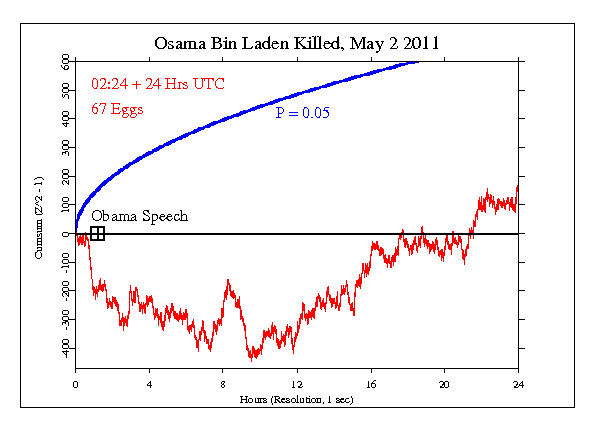|
From ABC news:
By DEAN SCHABNER and KAREN TRAVERS (@karentravers)
May 1, 2011
Osama bin Laden, hunted as the mastermind behind the worst
terrorist attack on U.S. soil, has been killed, President
Obama announced tonight.
The president called the killing of bin Laden the "most
significant achievement to date" in the effort to defeat al
Qaeda.
"Justice has been done," Obama said.
Bin Laden was located at a compound in Abbottabad, Pakistan,
which was monitored and when the time was determined to be
right, the president said, he authorized a "targeted
operation."
"A small team of Americans carried out the operation," Obama
said. "After a firefight, they killed Osama bin Laden and
took custody of his body."
DNA testing confirmed that it was bin Laden, sources told
ABC News.
Obama said tonight that he was briefed last August on a
possible but "far from certain" lead to bin Laden, but it
took many months for the intelligence community to "run this
thread to ground."
"I met repeatedly with my National Security team as we
developed more information about the possibility that we had
located Bin Laden hiding within a compound deep inside
Pakistan," the president said.
"Finally, last week I determined that we had enough
intelligence to take action and authorized an operation to
get Osama Bin Laden and bring him to justice," he said.
Sources said the attack was carried out by Joint Special
Operations Command forces working with the CIA.
Several of GCP's analysts agreed that this was an obvious
event for inclusion in our formal series, and discussed the
appropriate parameters.
The GCP event was set for a 24 hour period beginning with
the first public presentation of information in the form of
a tweet at 22:24 ET, a little more than an hour before
President Obama made the formal announcement at 23:35.
This corresponds to UTC 02:24 May 2nd to 02:24 May 3rd.
The result is Chisquare 86550 on 86400 df, for p = 0.358
and Z = 0.363.
We expect to present additional exploratory
analyses. The first of these is a look at the data from US
nodes only, by Peter Bancel, using normalized data.
The result is nearly identical to the full network outcome, with Z = 0.300, and
a similar cumulative deviation history.

It is important to keep in mind that we have only a tiny
statistical effect, so that it is always hard to distinguish
signal from noise. This means that every "success" might be
largely driven by chance, and every "null" might include a real
signal overwhelmed by noise. In the long run, a real effect can
be identified only by patiently accumulating replications of
similar analyses.
|